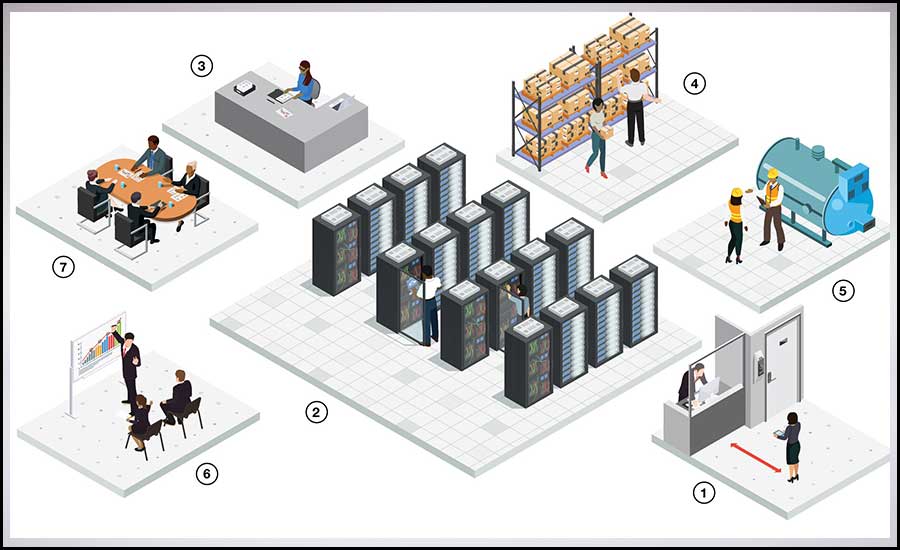Mission-critical facilities such as data centres, hospitals, and military establishments play an indispensable role in ensuring uninterrupted operations for life, businesses, and systems. In simple terms, they provide the infrastructure and equipment that people require to function adeptly and continuously.
Similarly, if mission-critical systems go down due to network failures, natural calamities, cybercrimes, or power cuts, it will lead to significant revenue losses for businesses while also entailing reputational damage. This is where data centres come in, providing enterprises with space, network, infrastructure, and security so mission-critical operations can run smoothly.
This article will offer insights into how data centres ensure efficiency in mission-critical operations, so keep reading to know more.
Data Centres: The Backbone of Mission-Critical Operations
As the popularity of IoT (Internet of Things) services grows, and the world heads towards large-scale digitalisation, the average dependency on technology & connectivity has surged (1). While the effect has been most visible for mission-critical operations, it also extends to the usage of personal devices such as smart televisions and home automation devices.
Additionally, the expanding IT consumerisation has resulted in increased consumer touchpoints, making it critical for data centres to provide uptime across all levels. Data centres require a redundant power supply, intelligent building systems, power & cooling systems, and comprehensive physical security to maintain mission-critical operations and minimised downtime.
Thus, next-gen data centres are the backbone of mission-critical operations supporting businesses across all verticals such as e-commerce giants, digital media platforms, mobile commerce, telecommunication services, and network providers.
Why Data Centre Location Is Crucial to Mission-Critical Operations
As discussed earlier, data centres require modern infrastructure to ensure efficiency in mission-critical operations. However, even the data centre’s geographical location impacts its efficiency, competency, and connectivity. Typically, data centre facilities are based in areas that don’t experience severe weather conditions or natural disasters.
Be it hurricanes, floods, tornadoes, storms, or earthquakes; a data centre should be protected against all such calamities. This is crucial so that any mission-critical services are not interrupted, and there is no downtime.
Additionally, since data centres require a constant power supply, it is vital to look for a location with a reliable power grid. However, today, several colocation data centre services opt for microgrids, as they ensure a dependable power supply.
The Importance of Advanced Security Practices
When we talk about security in relation to data centres, cybersecurity tops the list (2). It includes regular security upgrades, updated hardware & software, using anti-malware, privatised connections, two-factor authentications, and much more.
However, ensuring efficiency in mission-critical operations also involves several physical security measures. For instance, data centres use biometric access control systems for equipment racks, computer rooms, site perimeters, and, most importantly, server rooms. Both physical and cyber security together ensure there aren’t any external or internal threats that may cause downtime or disrupt mission-critical operations of data centres.
Why Remote Site Monitoring Is Essential
In addition to improve efficiency, reliability, and connectivity, data centres also prioritise enhancing redundancy, typically done by deploying IT systems designed for remote site monitoring. For instance, if an organisation experiences downtime in its mission-critical operations, such redundancies enable data centres to recover data and resume services quickly. Similarly, data can be moved to an advanced off-site backup centre, but it depends on the scale of the disruptions.
STT GDC India offers 21 modern and advanced colocation data centre services to meet your business’ growth trajectory. Spread across nine cities, STT GDC India ensures efficiency in mission-critical operations with an IT load of 197 MW, ensuring that your mission-critical data is always in safe hands.
Sustainable practices have always been a priority for STT GDC India. The organisation has also been awarded the Green Datacenter Initiatives Award in 2021. So, explore their colocation services today and bring your business one step closer to achieving maximum efficiency in mission-critical operations with STT GDC India.












